Learning how to talk about the weather is a foundational block in learning Japanese, such as knowing what the word for weather is (tenki), and being able to describe the sky as sunny (hare) or cloudy (kumori).
In this article, we look at 68 top words that you may use in a conversation about the weather, and how to describe different weather occurrences.
What are the Top 68 Japanese Weather Words?
What are General Weather Words in Japanese?
Here is a list of general weather words in Japanese:
- Weather – Tenki (天気).
- Weather forecast – Tenkiyohō (天気予報 or てんき よほう).
- Temperature – Kion (気温 or きおん).
- Weather Front – Zensen (前線 or ぜんせん).
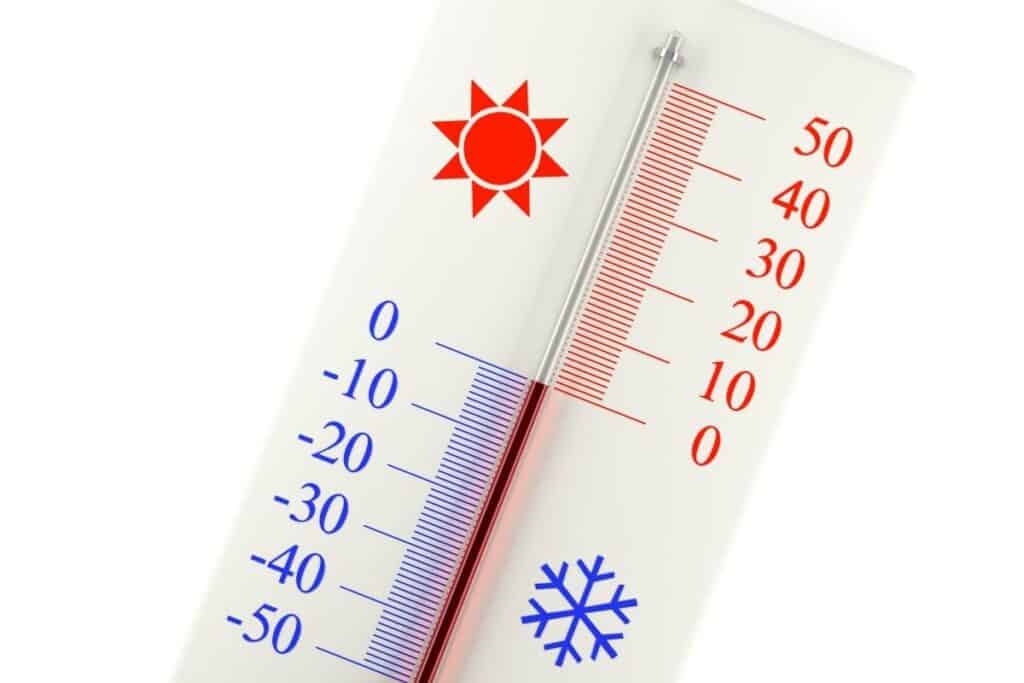
What Are Air Moisture and Pressure Words in Japanese?
Here is a list of moisture and pressure words in Japanese:
- Dryness – Kansou (乾燥 or かんそう).
- Dry – Hideri (日照り or ひでり).
- Moisture or Humidity – Shikke (湿気 or しっけ).
- Levels of Humidity – Shitsu do (湿度 or しつど).
- Minimum Temperature – Saitei kion (最低気温 or さいていきおん).
- Maximum Temperature – Saikou kion (最高気温 or さいこうきおん).
- Atmospheric Pressure – Kiatsu (気圧 or きあつ).
- Low Atmospheric Pressure – Tei kiatsu (低気圧 or ていきあつ).
- High Atmospheric Pressure – Kou kiatsu (高気圧 or こうきあつ).
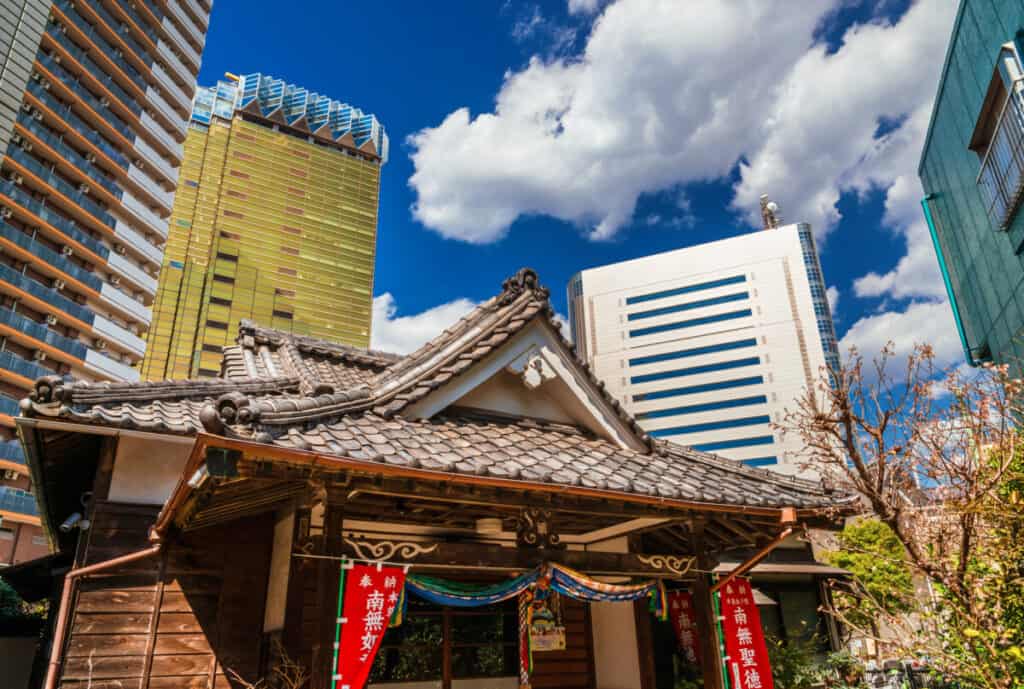
What Are Sky Description Words in Japanese?
Here is a list of sky words in Japanese:
- Clear skies – Seiten (晴天 or せいてん).
- Sunny – Hare (晴れ or はれ).
- Rainy – Amefuri (雨降り or あめふり).
- Cloudy – Kumori (曇り or くもり).
- Clouds – Kumo (雲 or くも).
- Overcast – Amagumori (雨曇りor あまぐもり).
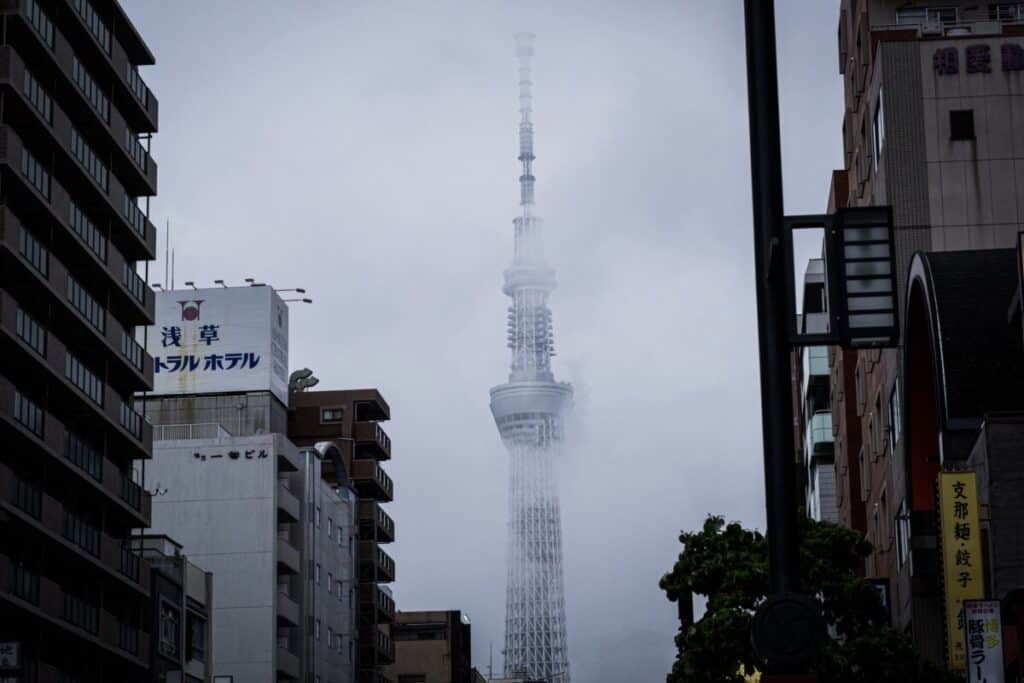
What are Rain Description Words in Japanese?
Here is a list of rain words in Japanese:
- Rain – Ame (雨 or あめ).
- Acid rain – Sanseiu (酸性雨 or さんせい う).
- Misty Rain – Kiri same (霧雨 or きりさめ).
- Light rain – Kosame (小雨 or こさめ).
- Rain Shower or Sudden Shower- Niwaka ame (俄雨 or にわかあめ).
- Passing Shower – Toori ame (通り雨 or とおりあめ).
- Heavy Rain – Ooame (大雨 or おおあめ).
- Rainstorm – Boufuu (暴風雨 or ぼうふうう).
- Sun Shower or Sudden Rainfall With Sunshine – Tenki ame (天気雨 or てんきあめ).
- Spring Rain – Shunu or Haru same (春雨 or しゅんう / はるさめ).
- Regional Rain – Kyoku chi teki na ame (局地的な雨 or きょくちてきなあめ).
- Rain Season – Tsuyu or Baiu (梅雨 or つゆ / ばいう).
- Rainy Season – Uki (雨季 or うき).
- Fog or Mist – Kiri (霧 or きり).
- Heavy Fog or Dense Mist – Noumu (濃霧 or のうむ).
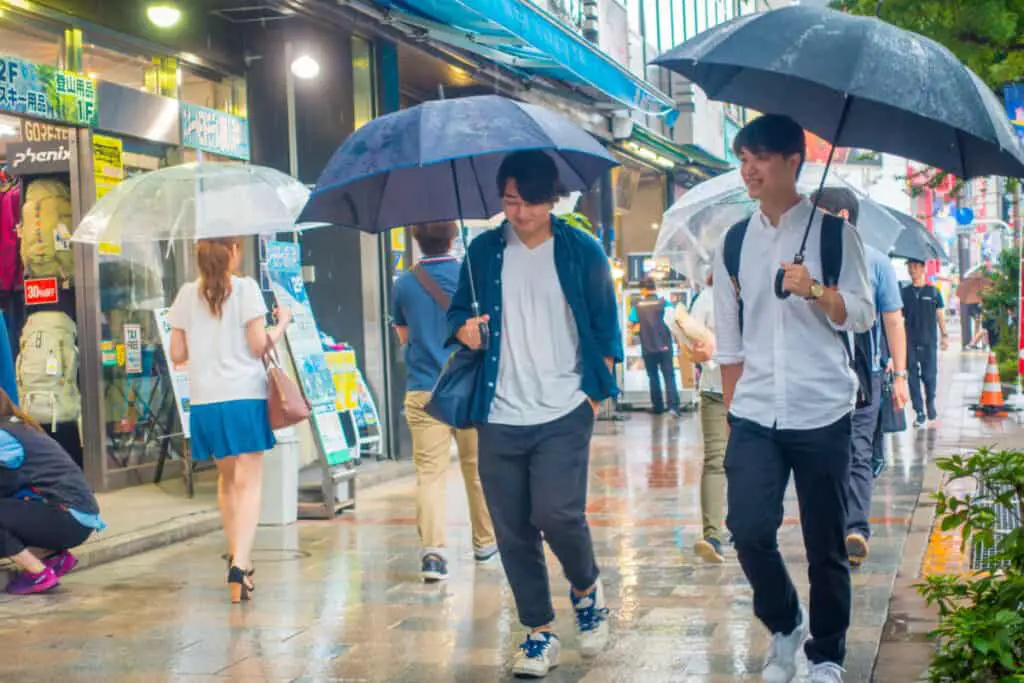
What are Wind Description Words in Japanese?
Here is a list of wind words in Japanese:
- Windy – Kaze ( 風 or かぜ).
- Strong Wind – Kyoufuu (強風 or きょうふう).
- Windstorm – Boufuu (暴風 or ぼうふう).
- Sea Breeze – umikaze or kaifuu (海風 or うみかぜ / かいふう).
- Land Breeze – Rikufuu (陸風 or りくふう).
- Whirlwind or Vortex – Senpuu or Tsumuji kaze (旋風 or せんぷう / つむじかぜ).
- Monsoon / Seasonal Wind – Kisetsu fuu (季節風 or きせつふう).
- Typhoon – Taifuu ( 台風 or たいふう) This can be used to describe typhoons and hurricanes.
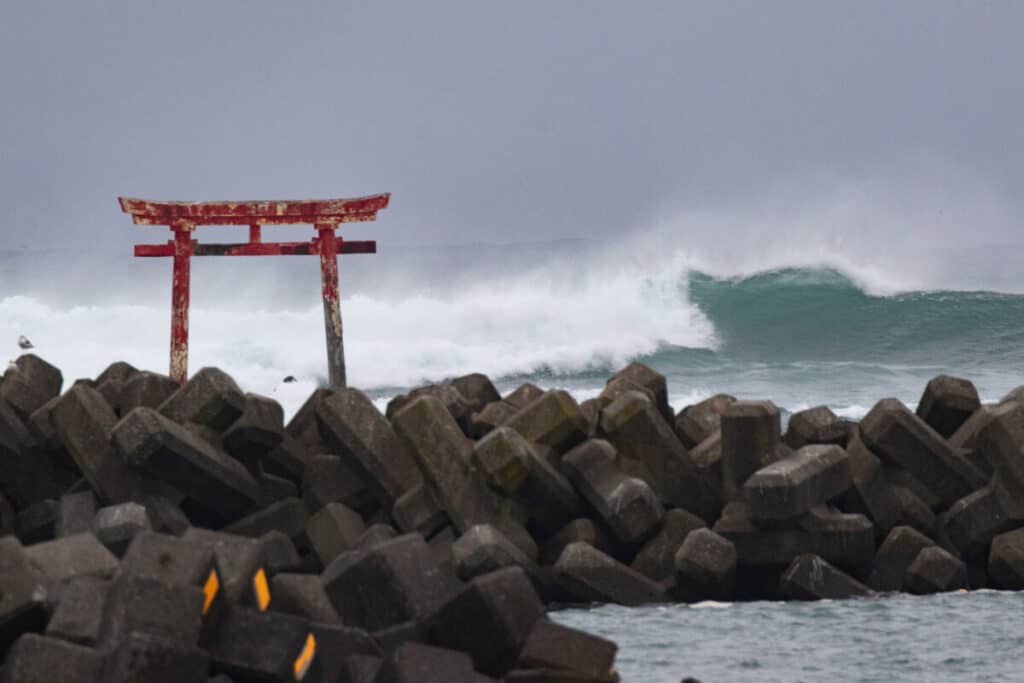
What are Temperature Description Words in Japanese?
Here is a list of temperature words in Japanese:
- Hot – Atsui ( 暑い or あつい ) Keep in mind that the kanji used for hot ‘weather’ and hot ‘objects’ are different.
- Cold – Samui (寒い or さむい).
- Icy or Stingy – Tsumetai (冷たい or つめたい).
- Cool – Suzushii ( 涼しい or すずしい).
- Humid – Jimejime (じめじめ).
What are Snow Description Words in Japanese?
Here is a list of snow words in Japanese:
- Sleet – Mizore (霙 or みぞれ ).
- Ice and Snow – Hyousetsu (氷雪 or ひょうせつ ).
- Heavy Snow – Ooyuki (大雪 or おおゆき).
- Accumulate – Tsumoru (積もる or つもる) This word is used to talk about snow accumulating on the ground.
- Hail – Hyō (雹 or ひょう).
- Hailstone or Falling Ice Ball – Arare (霰 or あられ).
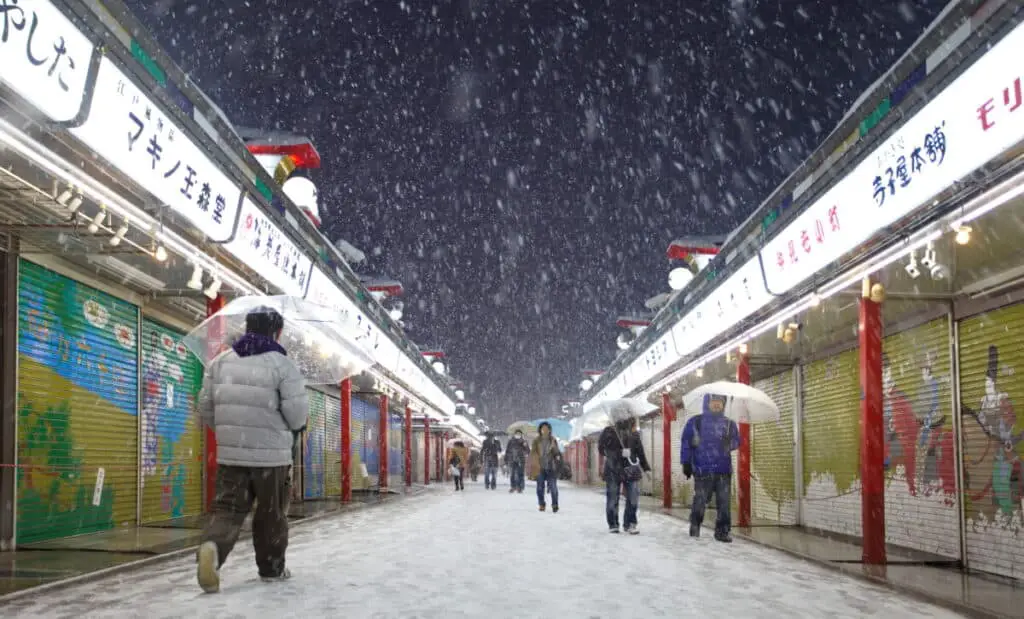
What are Storm Description Words in Japanese?
Here is a list of storm words in Japanese:
- Thunderstorm – Raiu (雷雨 orらいう).
- Thunder – Kaminari (雷 or かみなり) Can refer to thunder and lightning.
- Lightning – Inazuma (稲妻 or いなずま) Refers to a flash of lightning.
What are Extreme Weather Description Words in Japanese?
Here is a list of extreme weather words in Japanese:
- Tornado – Tatsumaki (竜巻 or たつまき).
- Flood – Kozui (洪水 or こうずい).
- Tsunami – Tsunami (津波 or つなみ).
- Earthquake – Jishin (地震 or じしん).
- Japanese Earthquake Scale – Shindo (震度 orしんど).
- Earthquake Center / Seismic Center – Shingen (震源 or しんげん).
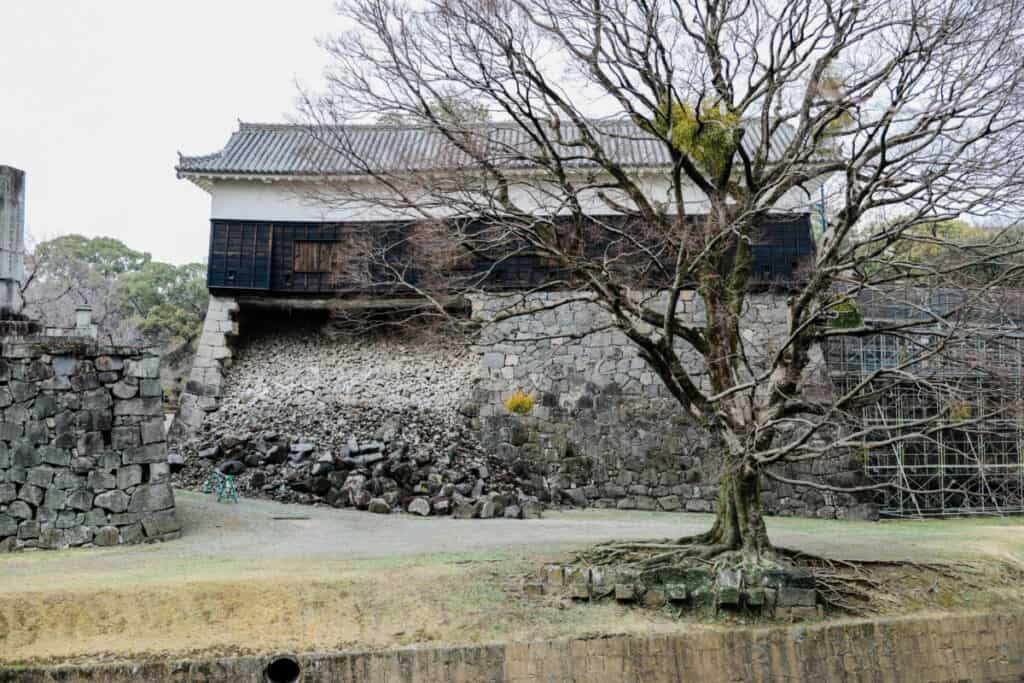
What Are Miscellaneous Weather Words in Japanese?
Here is a list of some more words in Japanese:
- Rainbow – Niji (虹 or にじ).
- Season – Kisetsu (季節 or きせつ).
- Winter – Fuyu (冬 or ふゆ).
- Spring – Haru (春 or はる).
- Summer – Natsu (夏 or なつ).
- Fall – Aki (秋 or あき).
How do I Memorize Japanese?
There are a variety of ways to help the memorization and learning process, such as utilizing flashcards, handwriting, mnemonics, and media.
How do I use Flashcards to Memorize Japanese?
Using flashcards in a binder is a simple and easy way to learn Japanese as it engages your memory areas and is an easy way to test yourself.
Simply take a flashcard, and on the front write your given word in English (or your native language), and on the reverse side, write the Japanese equivalent.
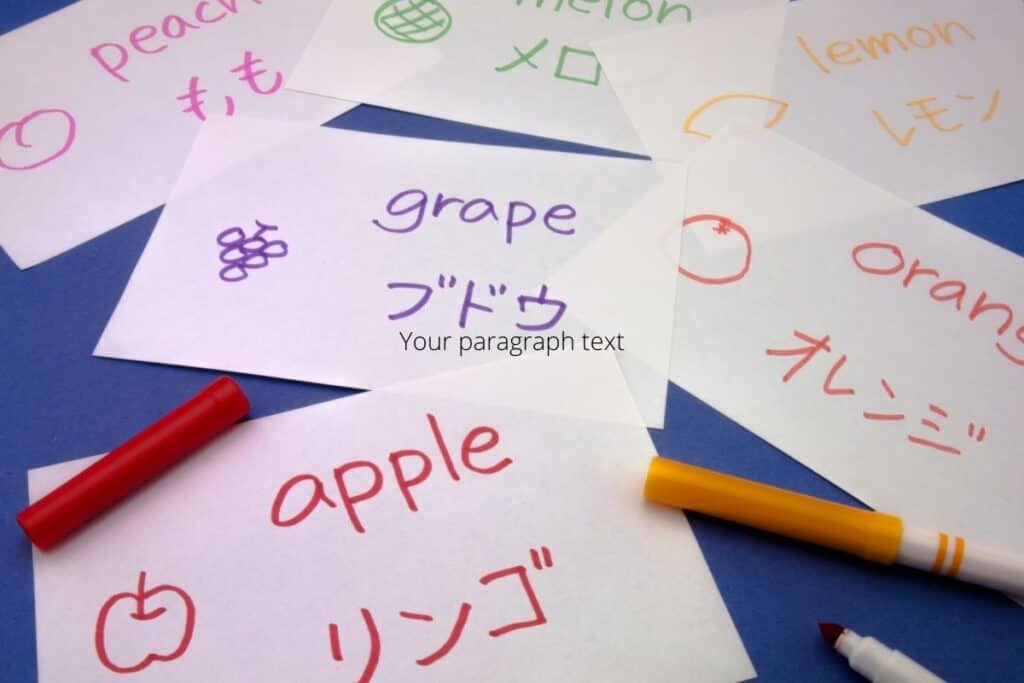
Bind all of these together on a ring or in a binder and flip through them, going over them one by one. You test yourself by taking the English (or native language) side of the card and try to remember or guess what the Japanese word is before you flip the card over and look at the answer.
Tip: On the opposite side of what you’re trying to learn, consider drawing a little image to help remind you what word is what.
For example, if you wanted to learn the word cat, which is ‘neko’, on the English (or native language) side, you would draw something to remind you of the word, like a ‘neck’ as it sounds similar to ‘neko’.
How do I Use Handwriting to Memorize Japanese?
Handwriting your own vocabulary list is useful as writing is known for engaging your mind in different ways, helping you to remember more.
Plus, when you’re looking over a vocabulary list in your own handwriting, it feels more personal as it’s a list of words that you’re interested in, not a list someone created for you.
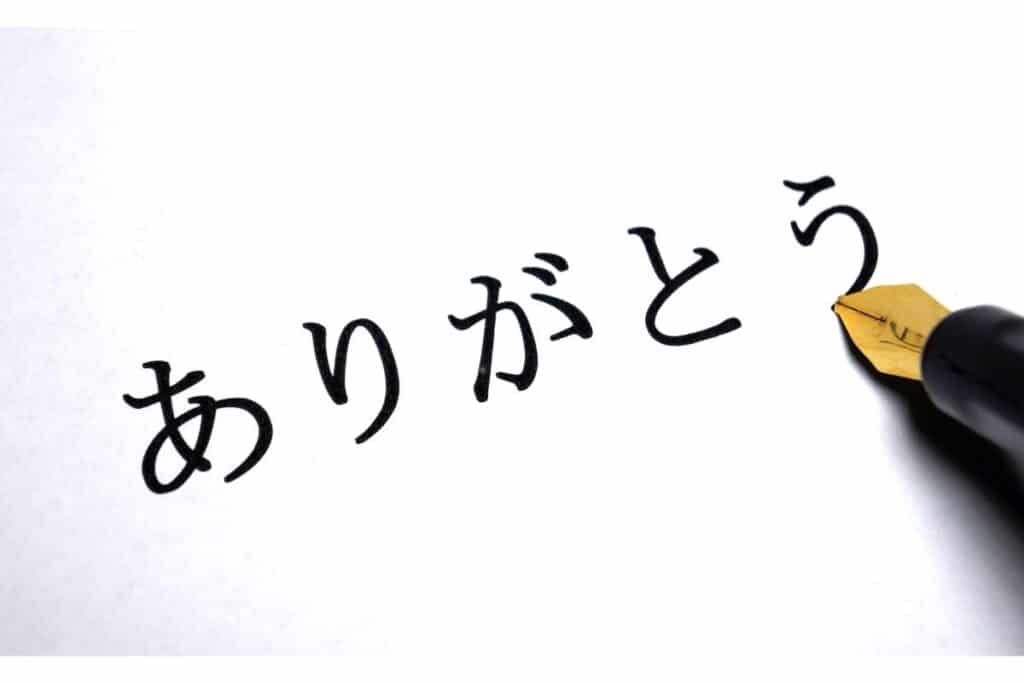
How do I Use Mnemonics to Memorize Japanese?
Mnemonics essentially associate the Japanese word with a similar-sounding word with a similar description in English (or any native language.) It is a mental exercise with a two-step process involving imagination and word association, so we will go over an example below using the word たべる (taberu) which means ‘to eat’.
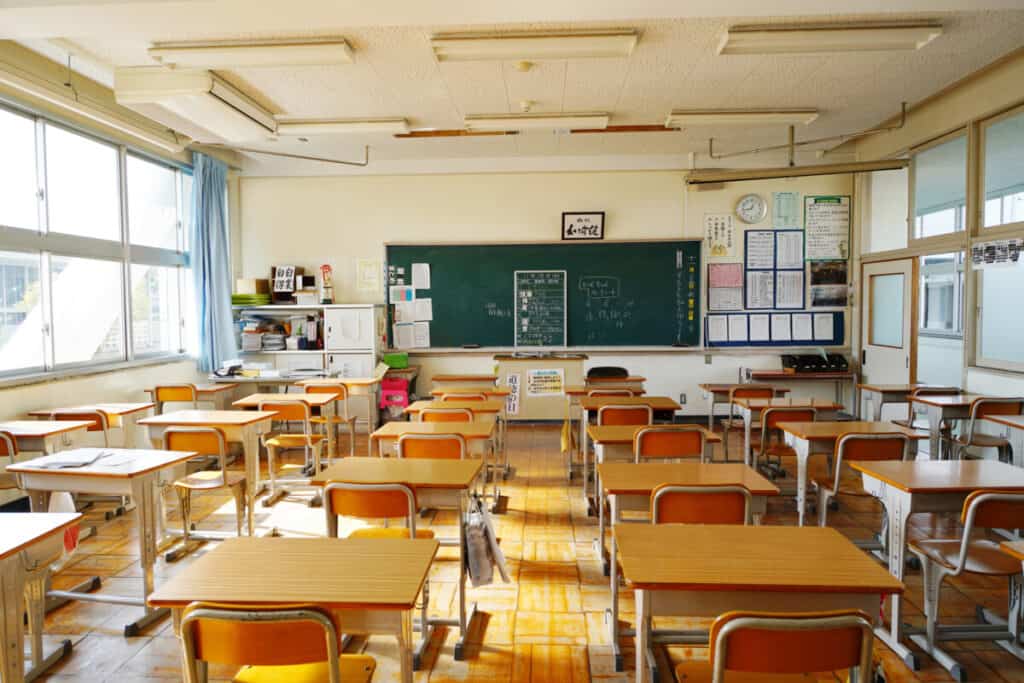
With the word たべる (taberu), associate it with a certain word in the English language that relates to the word. Like for taberu, we can use the English word ‘table’.
It sounds similar, and if we stretch our imagination, we can also infer that we sit at a ‘table’ when we want ‘to eat’, giving ‘table’ the same inner meaning as ‘taberu’.
To put that into a mnemonic that can be easily memorized, we will want to visualize the following sentence: “The table is where we go to eat.” What is brought to mind is a table, derived from taberu, and you’re going to eat at it.
The table is the keyword, and should trigger a recall of the answer ‘to eat’.
So when someone tells you ‘taberu’ you should be seeing a table in your mind, and be able to recall that it means ‘to eat’. That’s essentially a mnemonic.

Utilizing ‘flashbulb memory’ in your mnemonics, as language teaching proffesionals put it, increases your capacity to memorize as it throws your mind a curveball that it’ll more likely chew on and consider being important, making the mnemonic stick more.
How do I Use Media to Memorize Japanese?
Any type of media, whether it is Japanese songs, podcasts, books, anime, movies, or news can really help you get a feel for how the words are used in the language.
Ideally, if you have access to media with an English translation or subtitles, you’ll be able to refer back to it and know you’re on the right track as you’re listening or watching the material.










